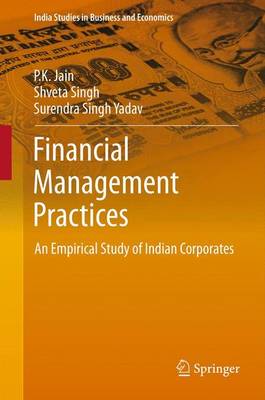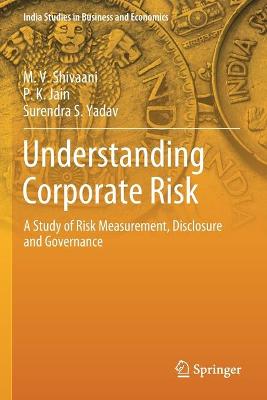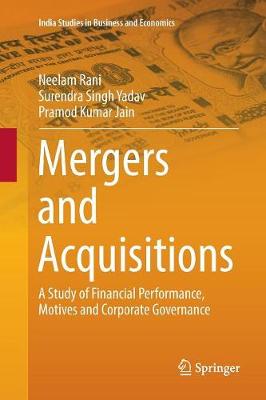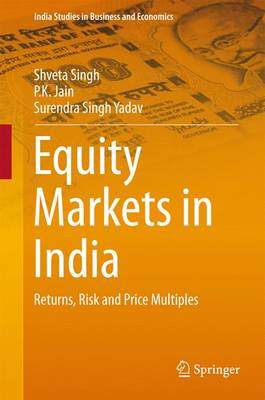India Studies in Business and Economics
5 total works
Financial Management Practices
by P. K. Jain, Shveta Singh, and Surendra Singh Yadav
Financial management practices are likely to have a marked effect on the financial performance of a corporate enterprise. Therefore, sound financial decisions/practices can contribute towards meeting the desired objective of having profitable operations. This subject assumes paramount significance in view of the present dynamic and turbulent business environment, which has produced more intense competition and smaller profit margins across the world. In this context, the financial management practices of the corporates in India, a country with a vast potential for economic growth, can offer valuable insights.
The present study explores whether there has been a major change in the financial performance (measured in terms of profitability) and financial policies/decisions of the sample companies over a fixed period (2000-2001 to 2010-2011), with a special focus on pre and post-recession analysis. It delves deeper into current research areas such as zero working capital, real options in capital budgeting, pecking order in capital structures, and clause 49 as reflected in the financial management decisions of sample companies, and provides a broader perspective by identifying trends (if any) in certain aspects of financial decision-making over the past two decades.
A comprehensive study, covering all the major aspects of financial management practices, also contains an inter-sectoral study (among the sample companies) and develops an index of professionalism in financial management based on the practices of the sample companies.
The book is primarily targeted at teachers/students of finance, management, commerce, accounting and related professional disciplines/fields. Practitioners/professionals will find it an invaluable text that helps guide them to better decision-making.
Understanding Corporate Risk
by M. V. Shivaani, P. K. Jain, and Surendra S. Yadav
This book proposes three normative frameworks pertaining to risk-measurement, disclosure and governance using expert opinion and data from the top 429 non-financial companies (of the NIFTY 500 index) over a 10-year period. The book offers a novel contribution to the global literature on disclosure quality by presenting a composite measure of the quality as well as quantity of risk disclosures. Focusing on the quality of risk disclosures and risk governance structures, and using sophisticated methodology to tackle the issue of endogeneity, the book explores the important yet uncharted confluence of accounting information, risk and corporate governance. It addresses the interplay between three facets of risk, and is corroborated by practitioners’ perspectives as well as case studies. It is an excellent resource for practitioners, professionals and policy-makers, in addition to researchers working on the topic.
Mergers and Acquisitions
by Neelam Rani, Surendra Singh Yadav, and Pramod Kumar Jain
The book examines the market reaction to mergers and acquisitions (M&A) announcements over a period from 2003 to 2015. Mergers and acquisitions continue to be amongst the preferred competitive options available to the companies seeking to grow fast in the rapidly changing global business scenario.M&A as a growth strategy has received attention from developed as well as emerging economies. It has been extensively used by managers as an expansion strategy and also serves as an important instrument for increasing corporate efficiency. Recently, M&A has grown at a rapid pace, creating a need for research to analyze what drives this phenomenon and how it affects firms and markets. As such, this book evaluates the impact of M&A on short-term abnormal returns as well long-term financial performance. It also assesses the management view concerning the motives for undertaking M&A. In addition, the book investigates the corporate governance practices of the acquiring firms and their impact on the short- term as well as long- term performance of those firms.
Corporate Governance Mechanisms and Firm Performance
by Shveta Singh and Monika Singla
This book begins by analysing the various corporate governance mechanisms explored in the extant literature and determining their effectiveness in enhancing the firm value using multivariate analysis. The findings are of global relevance as the corporate governance regulations of most countries focus on independent directors as the mainstay of good governance. The empirical evidence from the first objective of this study corroborates the claim that independent directors do not strengthen the firms’ governance quality. The book is one of the few works to have analysed the possible reasons behind the ineffectiveness of the independent directors. Also, in view of the famous concept of the bundle of governance mechanisms, it might be possible that the independent directors strengthen the firms’ governance quality indirectly by strengthening other governance mechanisms. This aspect too has little precedence. This study adopts a novel moderation and mediation approach to analyse the monitoring behaviour of independent directors in relation to other governance mechanisms. The work is a must read for corporate players as well as researchers and scholars studying this discipline.




